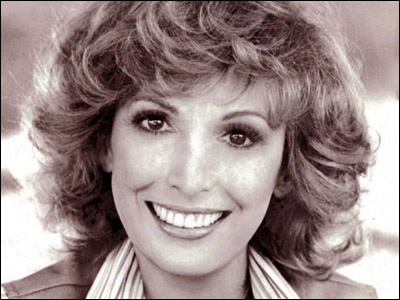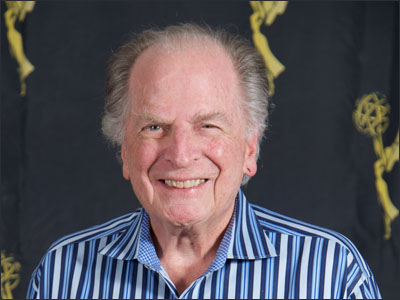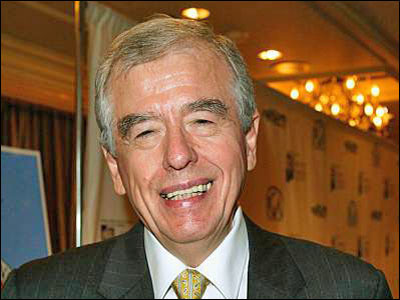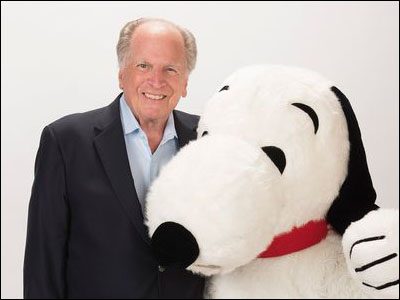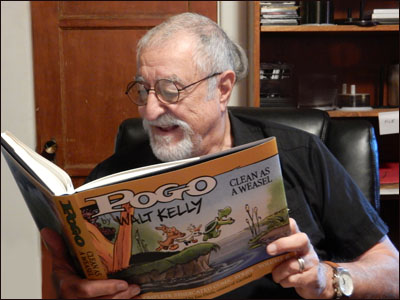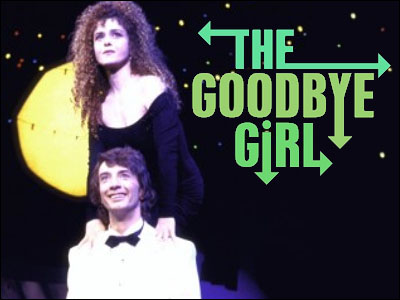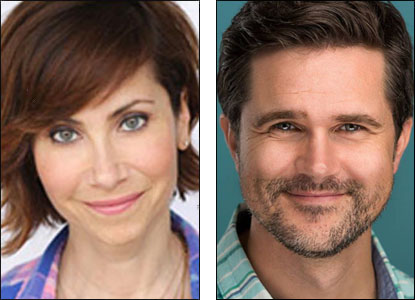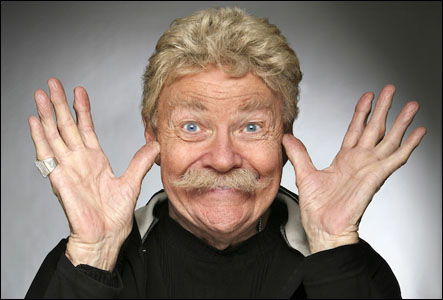
There are a number of obits up on all the major news sites about Lee Mendelson. They get his career mostly right but some had a little problem with the longevity of the main show I worked with him on, Garfield and Friends.
CNN says he did "over 100 episodes," which is only technically correct. Variety and People both said the show lasted from 1991 to 1994. CBR.com, which lately is vying with Donald Trump for erroneous statements, says Lee "executive produced 64 episodes of Garfield and Friends."
The Los Angeles Times didn't mention the series at all and TMZ did but didn't say how many episodes there were. With their usual flair for accuracy though, TMZ did run what they thought were two photos of Lee. One was and the other was of his partner, Bill Melendez.
The correct answer is that Garfield and Friends was on for seven years and 121 episodes, and Lee Mendelson was an Executive Producer on all of them.
But that's not the story I want to tell you here. The story I want to tell you here is about some specials that Lee did — hour-long prime-time specials that celebrated newspaper comic strips. They featured historical lessons about the form, interviews with cartoonists, musical numbers about comic strips and the last two of these specials even animated sequences of some newspaper strips that had never been animated before.

The first was called The Fabulous Funnies and it ran on NBC on 2/11/68. A description of it that I just stole off the website of Lee Mendelson Film Productions said…
Produced for NBC-TV network broadcast in cooperation with the National Cartoonists Society. The Fabulous Funnies is a one hour special on the history of the comic strip in America. It features some of the country's greatest cartoonists and their creations, from Barney Google to Dick Tracy. Hosted by Carl Reiner, the program also shows the artists at work, their characters animated, and a medley of songs from the comics performed by the Doodletown Pipers. The show is a unique combination of animation and live Action with a musical score by John Scott Trotter.
The ratings were huge and the folks at CBS, for whom Lee was producing the Charlie Brown specials, said to him, "Why didn't you offer that special to us?" Lee replied, "I did. You didn't think it would do very well and passed so I sold it to NBC. The folks at CBS said, "Well…we want the next one." It wasn't until 1980 that Lee did the next one, which was called The Fantastic Funnies and, yes, it was on CBS. According to that same website…
This 60 minute television special is a tribute to the history of the comic strip. Loni Anderson hosts with interviews of the 14 most famous cartoonists. The show features animation of all the famous comic strips along with a number of musical segments and a comedy sketch by Howard Hesseman. Music by Ed Bogas and Judy Munsen.
There were several newly-produced segments animating then-new newspaper strips that had never been animated before, including Garfield The reaction to just a few minutes of the lasagna-eating cat in that special led to a second series of award-winning animated specials for Lee.
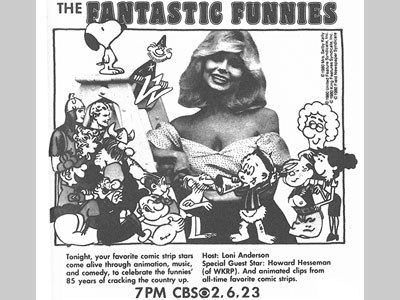
CBS also wanted another "Funnies" special but he was busy, plus he felt — even if the network didn't — that a TV special saluting comic strips was the kind of idea that would only work about once a decade or so. He put it off and put it off and eventually decided to just wait until he could make the next one about the 100th anniversary of newspaper strips.
Exactly what year that anniversary would be is a bit arguable depending on what cartoon-in-print you believe qualifies as the first comic strip. I have seen scholars of the form almost come to blows about it. Lee decided the first was something-or-other in 1897 so in 1997, he produced The Fabulous Funnies: The First 100 Years and he asked me to write it and co-produce with him. Quoth the website…
Using comic characters as hosts, this show celebrates 100 years of comic strips in America. From "Orphan Annie" and "Blondie" to "Peanuts" and "Shoe," cartoonists share the ideas and inspiration behind the creation of their comic strips. Cartoonists include: Chic Young (Blondie); Al Capp (L'il Abner); Dale Messick (Brenda Starr); Lynn Johnston (For Better or Worse); and Cathy Guisewite (Cathy).
Do you remember that show? If you think you did, you're wrong. It never aired. CBS paid hundreds of thousands of dollars for it, we produced it and delivered it and they said, "Great job! We'll find a spot on the schedule for it!" and then never found one. It was during a period when the three major networks aired very few specials and the ones that did get on had to be really, really important…like Emmy Awards important. They'd discovered that if a weekly series had a loyal following and you pre-empted it one week, not all of that loyal following remained loyal enough to not be following some other show the following week.
It had not always been like that but in and around 1997, that was the way audiences were behaving. Or at least that was Conventional Wisdom at the networks at the time.
The broadcast of The Fabulous Funnies: The First 100 Years was delayed and delayed, and at one point there was some discussion of us going back and redoing some narration to change "This year is the 100th anniversary of comic strips" to "Last year was the 100th anniversary of comic strips." Lee also thought about maybe picking something in 1898 to declare as the first newspaper strip so he could keep "The First 100 Years" in the title. Finally though, they decided they were never going to air it and that's why you've never seen it. Since you probably never will, I'll tell you a few things about it…
There was no live host. One fourth of it was hosted by Charlie Brown, one fourth by Mother Goose and Grimm, one fourth by Cathy (from Cathy Guisewite's strip of the same name) and one fourth by Momma (from Mell Lazarus's strip) — all animated. June Foray, by the way, did the voice of Momma. There were also freshly-produced segments wherein some relatively new strips were animated for the first time, including Ernie by Bud Grace and Jump Start by Robb Armstrong.
There were interviews of cartoonists — some newly-recorded, others pulled from previous specials or Lee's film archives. I did some traveling for it and interviewed Charles Schulz up in Santa Rosa, Stan Lee and Mike Peters back here, Robb Armstrong in New York, and a few others. Yes, I know Stan Lee was not a cartoonist. We cribbed a musical number from the 1968 special and it was a pretty nice end product if I do say so myself. Since I'm one of the few people alive who saw it, I have to say so myself.
Still, my most positive memory of it was working more closely with Lee than I had on other projects. He had that rare, wonderful ability that you don't always find in producers. He knew how to be there when he was needed and how to leave the other folks working on the show alone when he wasn't needed and on Garfield, he'd left me pretty much alone. It was while putting this project together than I really began to appreciate how good he was at producing television shows and I learned a number of things that I wish I'd learned a decade or two earlier. I'll tell you about all that in Part 2 tomorrow.
CLICK HERE TO GET TO PART 2

